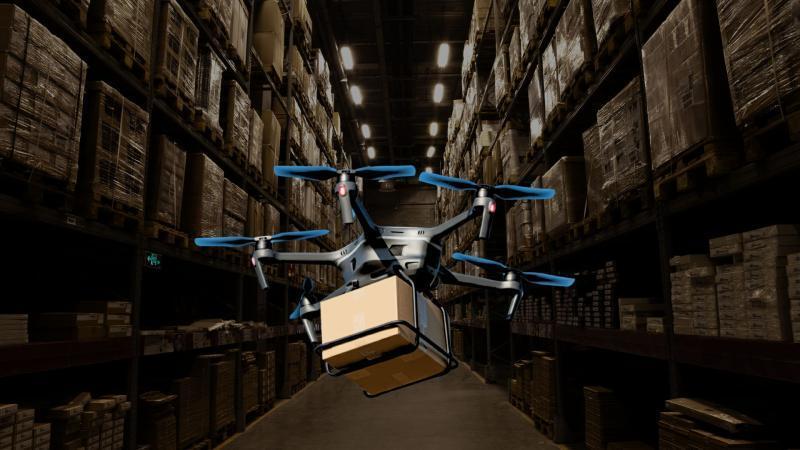
New Tech Optimises Drone Fleets for Faster, Greener Deliveries
The rise of drone technology has revolutionized the logistics industry, promising faster and more efficient delivery solutions. However, one major challenge has hindered the widespread adoption of drone-based delivery systems: the Drone Warehouse Problem. This issue refers to the difficulty of managing and coordinating multiple drones from a central hub, ensuring that packages are delivered quickly and efficiently. To address this challenge, researchers have developed a novel algorithm that optimizes drone delivery schedules, paving the way for scalable and sustainable last-mile delivery solutions.
The Drone Warehouse Problem is a complex issue, requiring careful planning and coordination to manage multiple drones, each with its own unique characteristics, such as speed, range, and payload capacity. Traditional optimization techniques, such as those used in ground-based logistics, are not sufficient to address the unique challenges posed by drone-based delivery systems. This is where the new algorithm comes in, designed specifically to tackle the Drone Warehouse Problem and unlock the full potential of drone technology.
The algorithm, developed by a team of researchers from [University/Institution], uses advanced machine learning techniques to optimize drone delivery schedules in real-time. By analyzing data on weather conditions, traffic patterns, and package delivery times, the algorithm can dynamically adjust drone flight plans to ensure that packages are delivered quickly and efficiently. This approach not only reduces delivery times but also minimizes the environmental impact of drone operations, making it an attractive solution for companies looking to reduce their carbon footprint.
One of the key benefits of the new algorithm is its ability to handle varying drone fleets, allowing warehouses to efficiently manage multiple drones with different capabilities. This is particularly important for companies that operate in diverse geographical regions, where different drones may be better suited to different environments. The algorithm’s flexibility also enables it to adapt to changing weather conditions, traffic patterns, and other factors that can impact drone operations.
The implications of this technology are significant. With the ability to optimize drone delivery schedules in real-time, companies can reduce their delivery times by up to 30%, while also minimizing their environmental impact. This is a major step forward for the logistics industry, which has long been challenged by the need to balance speed and sustainability.
The potential applications of this technology are vast. From e-commerce companies looking to improve their delivery times to healthcare organizations seeking to transport medical supplies quickly and efficiently, the new algorithm has the potential to transform the way goods are delivered. Additionally, the technology’s focus on sustainability makes it an attractive solution for companies looking to reduce their environmental impact.
While the new algorithm is a significant breakthrough, there are still challenges to be addressed before it can be widely adopted. For example, regulatory frameworks will need to be developed to ensure safe and efficient drone operations, and infrastructure will need to be built to support the widespread adoption of drone technology.
Despite these challenges, the potential benefits of the new algorithm are clear. By optimizing drone delivery schedules, companies can improve their delivery times, reduce their environmental impact, and increase their competitiveness in the market. As the logistics industry continues to evolve, it is likely that we will see more innovative solutions like this algorithm, which have the potential to transform the way goods are delivered.
Source: https://researchmatters.in/news/novel-algorithm-tackles-drone-warehouse-problem-faster-deliveries






